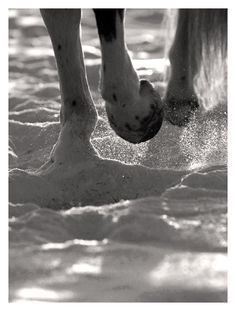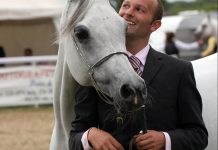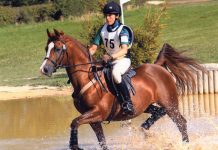I wrote down these thoughts during the festive period, when my house was full of presents, decorations and a regularly replenished store of mulled wine and edible treats. It’s an indulgent time of year, and in winter we don’t ride as much or have competitions to prepare for, so things can slip. This is when I start thinking about my New Year’s resolutions. Long ago I gave up deciding on resolutions that require me to give something up; I’m much the same at Lent, at this time of year, too. Instead I try to focus on a positive challenge or saying to apply to my somewhat busy world. I seem to be more successful at looking to achieve something, than trying to give something up and perhaps that is true for many others too. Ironically, those bad habits I had previously focused on banishing through New Year’s resolutions are far less prevalent in my life anyway, if I have a positive challenge to aim for! So maybe a little mindfulness as the seasons change is a wise move.
For a few years, the challenges I have set myself have been a little excessive, such as completing a marathon and attempting a 70.3 Ironman, so last year I resolved to just ‘smile and wave’ more and as a result I am a happy but slightly fatter version of me again. So my 2017 mission is to be more physically focused again, incorporating some charity fund raising to get me fitter as I ‘smile and wave’ each day. The benefit for my horses will be that as a fit rider I am far more balanced and comfortable to carry each time I ask them to go out jumping or hack out for hours at a time.
Rider weight is an issue for many horses, perhaps not so they show immediate clear symptoms of discomfort, but a heavy unbalanced rider prevents the horse from holding his back in a position where there is no additional stress placed on the vertebral column (spine) underneath. When researchers have looked at the relative position of the horse’s spine in full extension (dipped down) and full flexion (lifted up), the horse’s natural position, which I call ‘neutral’, is much closer to that seen at full extension than full flexion. Therefore when you introduce rider weight, there isn’t much room for the horse to drop the back before the spine is at full extension, resulting in stiffness, discomfort and potentially long term degenerative changes in the vertebral column. A young horse without the core and spinal muscle development to support rider weight will soon become uncomfortable, hence the need for non-ridden work as well as ridden. Just because a horse ‘looks strong’, it doesn’t mean he can immediately work for long periods of time, even if he is well behaved.
Moreover, this isn’t just an issue for young horses. Many horses obediently struggle on, carrying riders that are not giving their horse the best opportunity to carry them correctly. So how can we address this to give all our horses the best possible chance of moving comfortably and extending their working lives? Firstly, we all need to recognise that no matter how many years’ riding experience we have, and no matter how good a rider we might be, or might have once been, a lack of fitness makes us less co-ordinated and less well-balanced simply due to the fact that our muscle strength and nervous system co-ordination are weaker.
Riding more will help but we will still tend to favour certain muscle groups as we get tired in the saddle, so cross-training in other sports is definitely valuable. Running and cycling, especially on rollers, all improve cardio-vascular fitness as well as core and lower body strength, and you can feel a difference within a few weeks of starting training. Swimming is excellent for overall fitness, or kettlebell exercises can be used to target different muscle groups throughout the body.
The best part is that you really don’t need to be doing lots of cross-training in order to feel a change in your own riding, and for your horse to get the benefits. Ten minutes of kettlebell a day, or two 30 minute sessions running, cycling or swimming every week is enough to get a change that you and your horse can feel. Whatever you choose, and yes, there are plenty of other forms of exercise, always make sure you are in good health before commencing a new exercise programme and if necessary, have a health check up with your doctor first. Then plan your new activity into your diary, make a commitment to carry it through for a whole month and then see how much better you feel by the end of it. With a bit of luck and good planning, you will have the results that encourage you to keep it up through the rest of the year.
UPDATE: My New Years Resolution was to run a trail marathon at some time this year. I have just completed my first half marathon of the year, albeit at a very steady pace, at Bideford Half Marathon which is renowned for being almost completely flat. Well, it is always good to ease into these things! I was accompanied by a friend for whom running her first half marathon, and she managed to raise over £1,200 in sponsorship for Cancer Research UK and Devon Air Ambulance, so if you are tempted to challenge yourself, why not raise a bit of cash for a chosen charity? It is amazing how much people will give when they think you are doing something completely bonkers!
My next step is to keep up the long runs every two weeks or so, and build up my mileage over the hills, moors and trails. As my work life is so busy and sometimes unpredictable, I find it easier if I am adaptable in how and when I put the longer runs in, and whether my trail marathon occurs at an event, or one day in the summer over Exmoor, makes no difference to me. Either way, I will have run a trail marathon… I will keep you posted.











